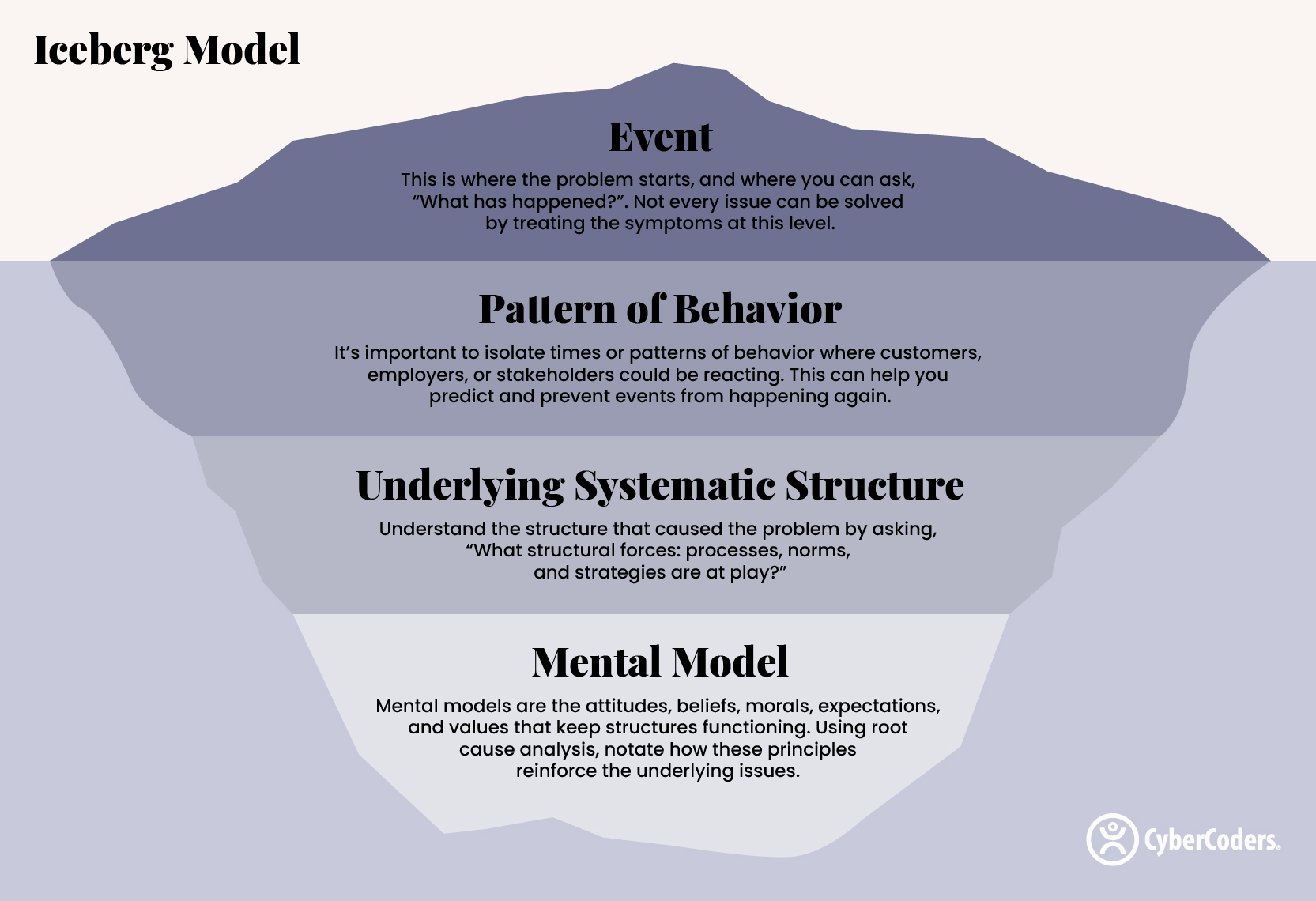When problems come up at work, 85% of CEOs or managers feel that companies are bad at diagnosing the problem. Executives will first need to know the root cause of the problem before they can solve it. To diagnose the issue, they’ll need to start with a root cause analysis.
What’s Root Cause Analysis?
Root cause analysis (RCA) is a way of looking at a failure or problem in a way that uncovers how the problem keeps happening. Trace back to how the problem first started to identify how certain processes or systems failed. While quick-fix solutions may help now, there’s no guarantee they can solve the problem indefinitely.
Identifying the Problem with the Iceberg Model

There are many tools available to help you analyze what the problem could be. One of these is the Iceberg Model, which is a tool used to look beyond the surface at factors such as company culture, unspoken norms, personal values, and systemic issues.
To understand what went wrong, you’ll have to shift your perspective to see beyond the immediate events that are evident to others. Using the Iceberg Model in your root cause analysis will help ensure that you address more than just events.
The Four Steps of the Iceberg Model
1. Event
This is where the problem starts, and where you can ask, “What has happened?”. Not every issue can be solved by treating the symptoms at this level.
Example: “The server went down during peak business hours, disrupting services.”
2. Pattern of Behavior
It’s important to isolate times or patterns of behavior where customers, employers, or stakeholders could be reacting. This can help you predict and prevent events from happening again.
Example: “We’ve noticed server downtimes have been occurring more frequently during high-traffic periods.”
3. Underlying Systematic Structure
Understand the structure that caused the problem by asking, “What structural forces: processes, norms, and strategies are at play?”
Example: “Our servers are outdated, and there are no scheduled maintenance or redundancy systems in place to handle the load.”
4. Mental Model
Mental models are the values, beliefs, morals, expectations, and attitudes that keep structures functioning. Using root cause analysis, it’s possible to identify how these principles reinforce underlying issues.
Example: “The leadership team assumes that investing in newer server technology isn’t worth the cost because the current setup has been ‘working well enough.’”
Solving the Problem
While you may have identified the problem, it’s up to you how to solve it! Work with your management team to come up with solutions that feel the most attainable and realistic. Set a plan in place and focus on how to stay positive at work. Before you know it, these obstacles will become a thing of the past.
Root cause analysis is a great skill to have when job searching. Check out our open jobs now!
For more tips on career growth, keep reading: How to Develop Career Capital for Success, Year-End Review: Reflecting On Your Professional Growth, and 7 People Skills to Help You Succeed at Work.













